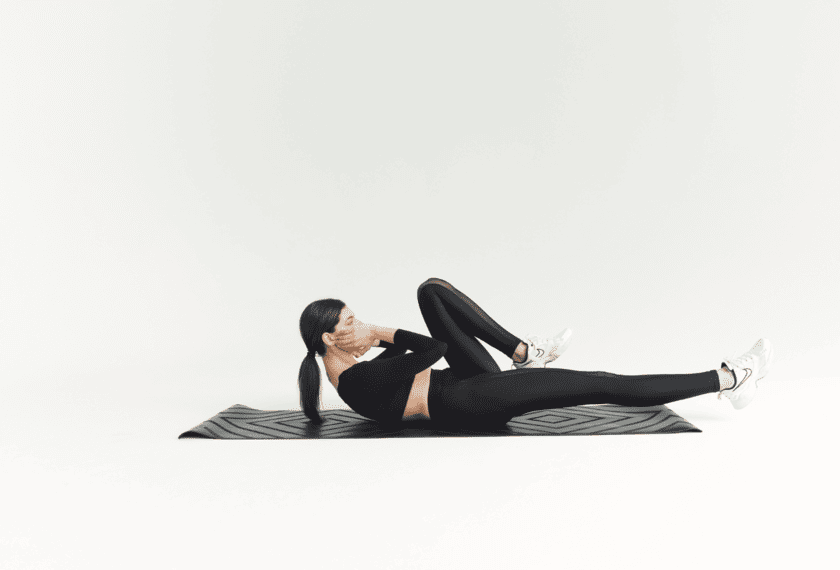Introduction
In today’s fast-paced world, where time feels like a scarce resource, prioritizing physical fitness can often fall by the wayside. The demands of work, family, and social commitments can leave little room for exercise or self-care. Yet, maintaining physical fitness is not just about looking good—it’s about feeling good, functioning at your best, and protecting your long-term health. The good news? You don’t need to overhaul your entire routine to make a meaningful impact. By focusing on two key components of physical fitness, you can create a manageable and sustainable approach that fits seamlessly into your busy lifestyle.
The Importance of Physical Fitness in a Busy Lifestyle
Physical fitness is more than just a checklist of activities—it’s a cornerstone of overall well-being. Regular exercise boosts energy levels, improves mental clarity, and reduces stress, all of which are essential for navigating a hectic schedule. It also strengthens your immune system, enhances sleep quality, and lowers the risk of chronic diseases. But let’s face it: when you’re juggling multiple responsibilities, the idea of carving out hours for fitness can feel overwhelming. That’s why it’s crucial to adopt strategies that are effective yet realistic.
Why Focusing on Two Key Components Makes It Manageable
Instead of trying to tackle every aspect of fitness at once, honing in on two essential areas can simplify your approach. This targeted method reduces decision fatigue and allows you to make steady progress without feeling burdened. Whether it’s improving cardiovascular health and building strength, or focusing on flexibility and balance, narrowing your focus ensures that your efforts are intentional and impactful. Simplicity is key—by integrating these components into your routine, you can create a fitness program that’s both achievable and sustainable, even amidst a packed schedule.
Remember, small, consistent steps are far more effective than sporadic, intense efforts. By understanding the importance of physical fitness and adopting a streamlined approach, you’re setting yourself up for long-term success—without adding unnecessary stress to your life.
The First Key Component: Cardiovascular Exercise
(These examples are for illustrative purposes only; always consult a qualified professional and adapt them according to your individual needs)
Benefits of Cardio for Heart Health and Endurance
Cardiovascular exercise, often referred to as cardio, is the cornerstone of any physical fitness program. It plays a vital role in strengthening your heart, improving circulation, and boosting endurance. When you engage in cardio activities, your heart works more efficiently, pumping oxygen-rich blood throughout your body. This not only reduces the risk of heart disease but also enhances your overall stamina, making daily activities feel less taxing.
Regular cardio has been linked to numerous health benefits, including:
- Lower blood pressure and cholesterol levels
- Improved lung capacity and oxygen utilization
- Increased energy levels and reduced fatigue
- Better sleep quality and mood regulation
Simple Cardio Activities for Busy Schedules
One of the biggest misconceptions about cardio is that it requires a gym membership or hours of dedication. In reality, effective cardio can be simple and time-efficient, even for those with packed schedules. Here are some accessible activities to get your heart pumping:
- Brisk walking: A 20-minute walk during your lunch break or after dinner can make a significant difference.
- Stair climbing: Skip the elevator and take the stairs whenever possible.
- Dancing: Turn up your favorite music and dance around your living room for a fun, energizing workout.
- Jumping jacks or jogging in place: Perfect for squeezing in a quick session at home.
These activities require minimal time and equipment, making them ideal for busy individuals.
How to Incorporate Cardio into Daily Routines

Integrating cardio into your daily life doesn’t have to feel like a chore. With a little creativity, you can make it a seamless part of your routine. Here are some practical tips:
- Combine cardio with errands: Walk or bike to the grocery store instead of driving.
- Make it social: Invite a friend for a walk or join a local running group to stay motivated.
- Use technology: Set reminders to move throughout the day or try a fitness app with short, guided workouts.
- Break it up: Instead of one long session, do 10 minutes of cardio three times a day.
By weaving cardio into your day, you’ll not only reap the physical benefits but also create a sustainable habit that fits seamlessly into your lifestyle.
The Second Key Component: Strength Training
Why Strength Training Matters for Your Body
When we talk about physical fitness, strength training often gets overshadowed by cardio, but it’s just as crucial. Strength training isn’t just about building muscles; it’s about enhancing your overall health. Regular strength exercises can improve muscle tone, boost metabolism, and, importantly, strengthen bones, reducing the risk of osteoporosis as you age. It’s not just for athletes or gym enthusiasts—it’s for anyone who wants to feel stronger, more capable, and resilient in everyday life.
Basic Strength Exercises to Get Started
If the idea of strength training feels overwhelming, start simple. You don’t need fancy equipment or hours at the gym. Here are a few foundational exercises you can do at home or anywhere:
- Bodyweight squats: Strengthen your legs and core.
- Push-ups: Build upper body and core strength (modify on your knees if needed).
- Planks: Great for core stability and endurance.
- Lunges: Target your legs and glutes while improving balance.
These exercises are beginner-friendly and can be adjusted to fit your fitness level. The key is consistency—start with what feels manageable and gradually increase intensity.
Fitting Strength Training Into a Busy Day
We get it—finding time for exercise can feel impossible when your schedule is packed. But strength training doesn’t have to take hours. Here are some practical tips to make it work:
- Micro workouts: Break it into 10-minute sessions throughout the day. For example, do a quick set of squats while waiting for your coffee to brew.
- Combine with daily tasks: Do calf raises while brushing your teeth or lunges while folding laundry.
- Prioritize consistency over duration: Even two to three sessions a week can make a difference.
- Use your environment: No weights? Use household items like water bottles or resistance bands.
The goal is to make strength training a seamless part of your routine, not another item on your to-do list. Small, consistent efforts add up over time, and you’ll soon notice the benefits in your strength and confidence.
Balancing Cardio and Strength Training
When it comes to physical fitness, the debate between cardio and strength training often leaves many feeling torn. But the truth is, you don’t have to choose one over the other. A balanced approach that combines both is essential for overall health and well-being. Each type of exercise offers unique benefits—cardio improves heart health and endurance, while strength training builds muscle, boosts metabolism, and supports bone density. Together, they create a synergistic effect that enhances your overall fitness and keeps your routine engaging.
Why a Combination is Essential for Overall Fitness
Cardio and strength training each serve different but complementary purposes. Cardio exercises, like running, cycling, or swimming, elevate your heart rate and improve cardiovascular health. They also burn calories, making them effective for weight management. On the other hand, strength training, such as lifting weights or bodyweight exercises, builds lean muscle mass, which not only increases strength but also improves your resting metabolic rate.
Combining the two allows you to reap the benefits of both worlds. For example, strength training can make your cardio workouts more efficient by enhancing muscle endurance, while cardio can improve recovery times between strength sessions. Plus, alternating between the two prevents monotony, keeping your fitness journey exciting and sustainable.
- Cardio benefits: Boosts heart health, enhances endurance, burns calories.
- Strength training benefits: Builds muscle, increases metabolic rate, strengthens bones.
Creating a Weekly Schedule That Works for You
(These examples are for illustrative purposes only; always consult a qualified professional and adapt them according to your individual needs)
Balancing cardio and strength training doesn’t have to be complicated. The key is to create a schedule that fits your lifestyle and goals. Here’s a simple framework to help you get started:
| Day | Activity |
|---|---|
| Monday | Strength Training (Upper Body) |
| Tuesday | Cardio (30-40 minutes) |
| Wednesday | Strength Training (Lower Body) |
| Thursday | Active Recovery (Yoga or Stretching) |
| Friday | Cardio (Interval Training) |
| Saturday | Strength Training (Full Body) |
| Sunday | Rest or Light Activity (Walking) |
This plan is flexible—feel free to adjust it based on your preferences and time constraints. For instance, if you’re short on time, consider combining cardio and strength into a single session, known as circuit training. The goal is to find a rhythm that feels manageable and enjoyable for you.

Remember, consistency is more important than perfection. Whether you dedicate 20 minutes or an hour, incorporating both cardio and strength training into your week will lead to noticeable improvements in your fitness and overall health.
Overcoming Common Challenges
Staying Motivated When Time Is Limited
Life gets busy—work deadlines, family responsibilities, and social commitments can make it feel impossible to prioritize fitness. But consistency doesn’t require hours at the gym. Here’s how to keep moving forward, even when time is scarce:
- Embrace the 10-minute rule: Short workouts add up. A brisk walk, a few yoga poses, or bodyweight exercises at home can keep momentum alive.
- Anchor habits to existing routines: Pair exercise with daily rituals (e.g., squats while brushing teeth, stretching during TV commercials).
- Focus on progress, not perfection: Missed a workout? A 5-minute stretch still counts. Celebrate small wins to build long-term motivation.
“You don’t have to see the whole staircase—just take the first step.” — Martin Luther King Jr.
Dealing With Setbacks
Injuries, missed sessions, or life disruptions happen. Setbacks aren’t failures—they’re part of the journey. Here’s how to navigate them:
- Reframe the narrative: Instead of “I failed,” try “I’m learning.” Every restart strengthens resilience.
- Adjust, don’t abandon: Hurt your knee? Swap running for swimming. Traveling? Use resistance bands in your hotel room.
- Lean on your “why”: Reconnect with your deeper reason for fitness—energy for your kids, mental clarity, longevity.
Maintaining Consistency
Motivation fades; systems endure. Build a framework that keeps you on track, even on low-energy days:
| Challenge | Solution |
|---|---|
| Forgetting workouts | Schedule them like appointments—set phone reminders or prep gear the night before. |
| Boredom | Rotate activities (dance classes, hiking, cycling) to keep it fresh. |
| Lack of accountability | Partner with a friend or join an online community for encouragement. |
Remember: Fitness isn’t about all-or-nothing efforts. It’s the sum of small, repeated choices—showing up, adapting, and gently steering back when life veers off course.
Real-Life Tips for Success
Start Small and Build Gradually
When embarking on a physical fitness journey, it’s easy to feel overwhelmed by ambitious goals or rigid routines. Instead, focus on starting small. Commit to just 10 minutes of activity a day, whether it’s stretching, walking, or light exercises. This approach not only makes the process manageable but also builds momentum over time. As your body adapts and your confidence grows, gradually increase the duration or intensity of your workouts. Remember, progress is progress, no matter how small.
Find Activities You Enjoy to Stay Engaged
Staying consistent with a fitness program often hinges on how much you enjoy the activities you’re doing. Explore different options—whether it’s dancing, cycling, yoga, or team sports—and identify what sparks joy for you. When you genuinely look forward to your workouts, they become less of a chore and more of a rewarding part of your routine. Engagement is key to long-term success, so prioritize activities that align with your interests and energy levels.
Conclusion
Recap of the Two Essential Components
Physical fitness isn’t just about looking good—it’s about feeling good and building a foundation for long-term health. The two key components of any effective fitness program are cardiovascular endurance and strength training. Cardiovascular exercises, like running, swimming, or cycling, keep your heart healthy and improve your stamina, while strength training, such as weightlifting or bodyweight exercises, builds muscle, boosts metabolism, and supports bone health. Together, these elements create a balanced approach to fitness that benefits your body and mind.
Taking the First Step
Starting a fitness journey can feel overwhelming, especially when life is already packed with responsibilities. But remember, every step counts. You don’t need to overhaul your entire routine overnight. Begin with small, manageable changes—like a 15-minute walk after dinner or a few simple bodyweight exercises in the morning. Consistency is key, not perfection. Over time, these small efforts will compound into meaningful results.
It’s also important to find activities you genuinely enjoy. Fitness shouldn’t feel like a chore; it should be something that energizes and fulfills you. Whether it’s dancing, hiking, or yoga, choose what makes you feel alive. And don’t forget to celebrate your progress, no matter how small. Every milestone is a testament to your commitment.
Your Journey Starts Now
You’ve already taken the first step by educating yourself. Now, it’s time to put that knowledge into action. Your health is an investment in yourself, and there’s no better time to start than today. Surround yourself with supportive people, set realistic goals, and embrace the process. Remember, it’s not about being the best—it’s about being better than you were yesterday.
So, take a deep breath, lace up your shoes, and take that first step toward a healthier, happier life. You’ve got this!
FAQ
Q: How often should I exercise for optimal results?
A: Aim for at least 150 minutes of moderate aerobic activity or 75 minutes of vigorous activity per week, combined with two days of strength training.
Q: What if I don’t have time for long workouts?
A: Short, focused workouts can be just as effective. Even 10-15 minutes of high-intensity exercises or brisk walking can make a difference when done consistently.
Q: How do I stay motivated when progress feels slow?
A: Focus on non-scale victories, like improved energy, better sleep, or feeling stronger. Celebrate these wins to keep your motivation alive.
Reference?
- Han, C., Li, Z., & Sun, Y. (2024). The impact of exercise on sleep and sleep disorders. Nature Reviews Sleep, 1(1), 1-20. https://www.nature.com/articles/s44323-024-00018-w
- Bai, X., Soh, K. G., Omar Dev, R. D., Talib, O., Xiao, W., & Cai, H. (2022). Effect of Brisk Walking on Health-Related Physical Fitness Balance and Life Satisfaction Among the Elderly: A Systematic Review. Frontiers in public health, 9, 829367. https://doi.org/10.3389/fpubh.2021.829367
- Nicholson VP, McKean MR, Slater GJ, et al. (2015). Low-Load Very High-Repetition Resistance Training Attenuates Bone Loss at the Lumbar Spine in Active Post-menopausal Women. Calcif Tissue Int, 96(5), 490–499. https://doi.org/10.1007/s00223-015-9976-6
- Tucker, W. J., Peacock, J., & Bedi, S. (2022). Exercise for Primary and Secondary Prevention of Cardiovascular Disease: JACC State-of-the-Art Review. Journal of the American College of Cardiology, 80(11), 1013-1030. https://www.jacc.org/doi/10.1016/j.jacc.2022.07.004
- Phillips, S. M., Winett, R. A. (2010). Uncomplicated resistance training and health-related outcomes: evidence for a public health mandate. Current Sports Medicine Reports, 9(4), 208-213. https://doi.org/10.1249/JSR.0b013e3181e7da73





























